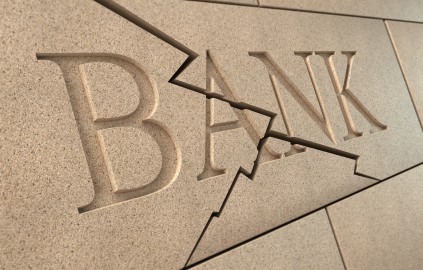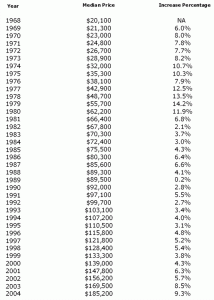Bank CD Rates versus Real Estate Investment Returns
 When comparing investments, it is interesting to look at the historical returns for bank Certificates of Deposit (CDs) versus the annual returns for investments in real estate.
When comparing investments, it is interesting to look at the historical returns for bank Certificates of Deposit (CDs) versus the annual returns for investments in real estate.
Everyone knows the real estate bust that all Americans experienced in 2008. Prior to that crisis, the only way real estate prices went was up. The thing to notice is that this crisis was not caused by the falling underlying value of real estate, suddenly being worth half of what they were before.
The greedy Wall Street bankers and unscrupulous lenders caused the crisis. Lenders offered adjustable rate mortgages to people who really did not qualify for a loan.
After the initial period of usually one year, the loan rates adjusted upwards. It was not uncommon for people to experience that their monthly payments increased by 50% or more. This caused foreclosures in the tens of millions in America, because few could afford the increased monthly payments
The collapse in the real estate market, caused real estate to sell for bargain basement prices, for any investors that had cash, because real estate loans almost did not exist during the crisis.
Historical Rates for Bank CDs
According to Bank Rate, the historical rates from CDs peaked during the last twenty year during 1985 at just around 12%. Since 1985, the bank CD rates went down. In the 1990s, they started at 8.75% and then went down to 5.25%. At the beginning of 2000, the bank CD rates were around 5.25%. Ten years later in 2010, the bank CD rates were on average less than 1% annually. From 2010 to the present day, banks are paying almost nothing for bank CDs, with the average annual rate of 0.15%!
Investors are extremely frustrated with bank CD rates in America. This is because the Consumer Price Index as reported by Investopedia showed increases in prices for standard durable goods of about 1.25% per year for the past five years.
This means in real terms, anyone investing in bank CDs for the past five years saw a real dollar value loss of about 1.10%.
Historical Rates for Real Estate Values
Investopedia shows the average annual real estate returns starting from 1968 to 2004 on this chart.
By 2006, real estate prices flattened and then in 2008 the real estate market experienced severe declines of over 30% per year.
In the past three years, real estate markets have increase about 17% per year. In many places, especially in Houston the prices rebounded now to over the prices at 2004 levels.
Yes we lost about ten years of value growth in real estate, however, when compared to bank CD – real estate wins for decades and will continue to win for the future decades.
Summary
The logic behind any real estate growth always exceeding bank rates for CDs is easy to understand. Banks pay very low amounts for CDs and then they invest the funds on a leveraged basis in real estate and other loans.
Banks will never offer more interest returns on an annual basis than they are able to make in giving real estate loans. The only reason they give real estate loans is because over the long-term real estate becomes more valuable.
